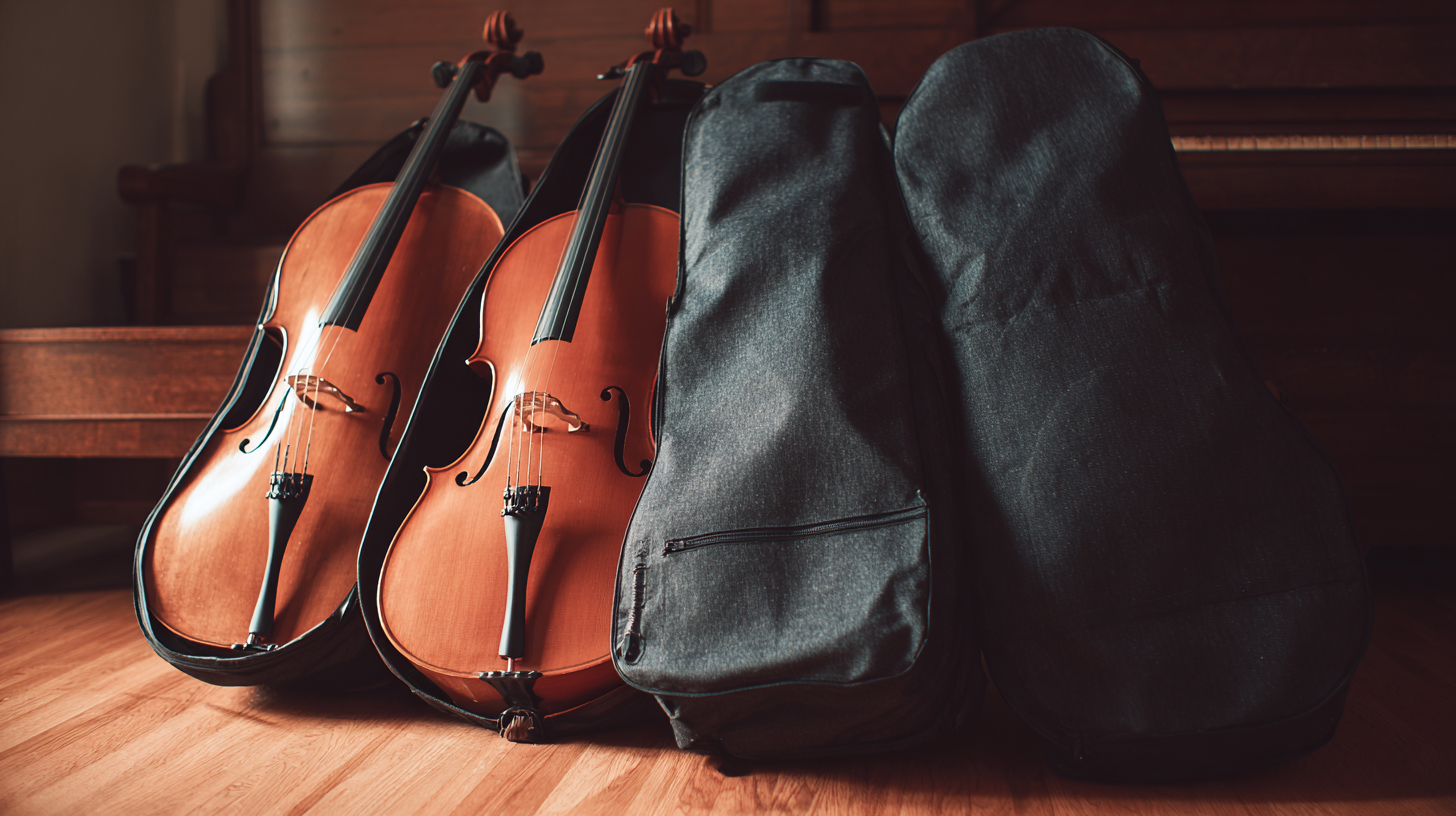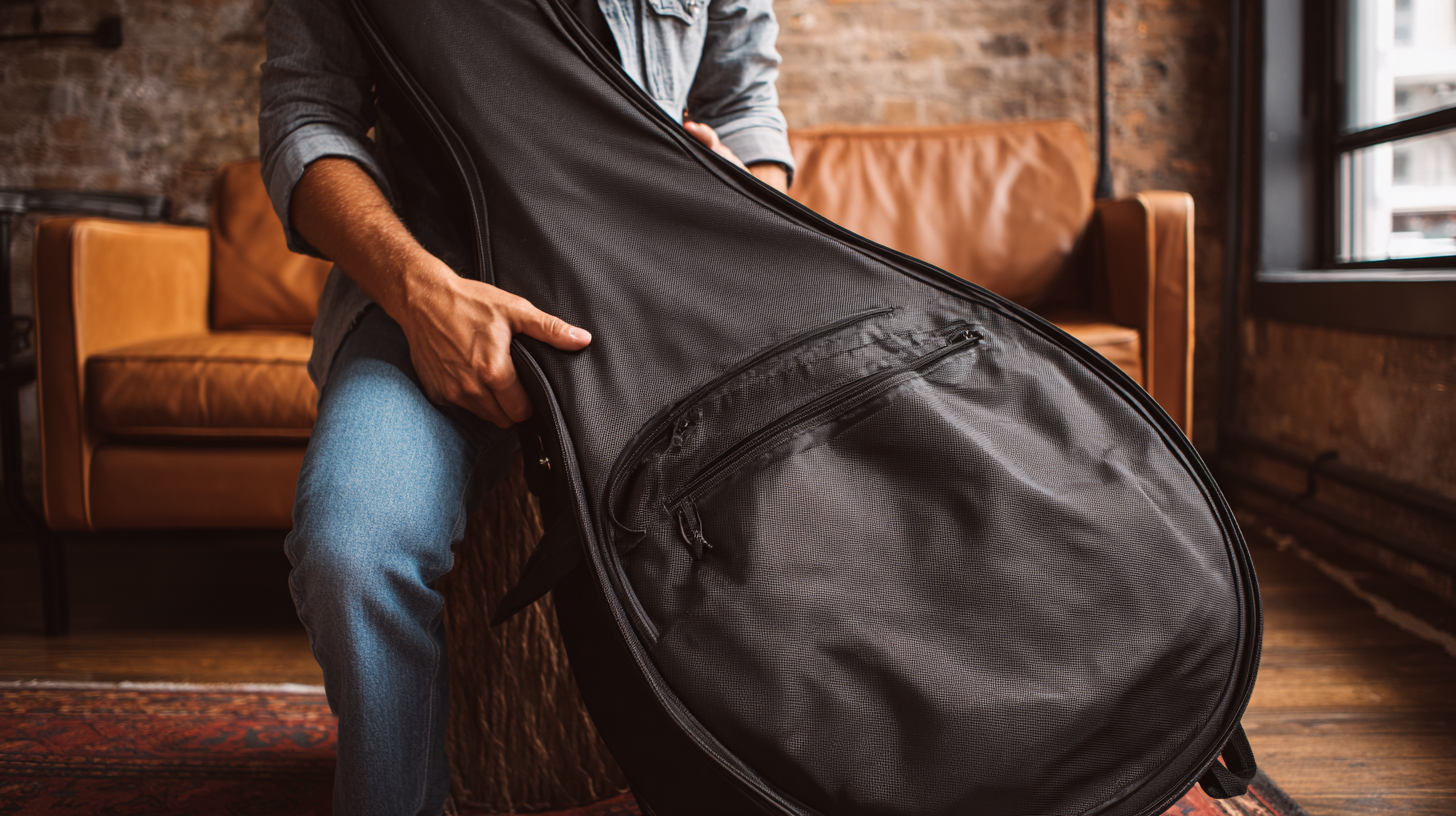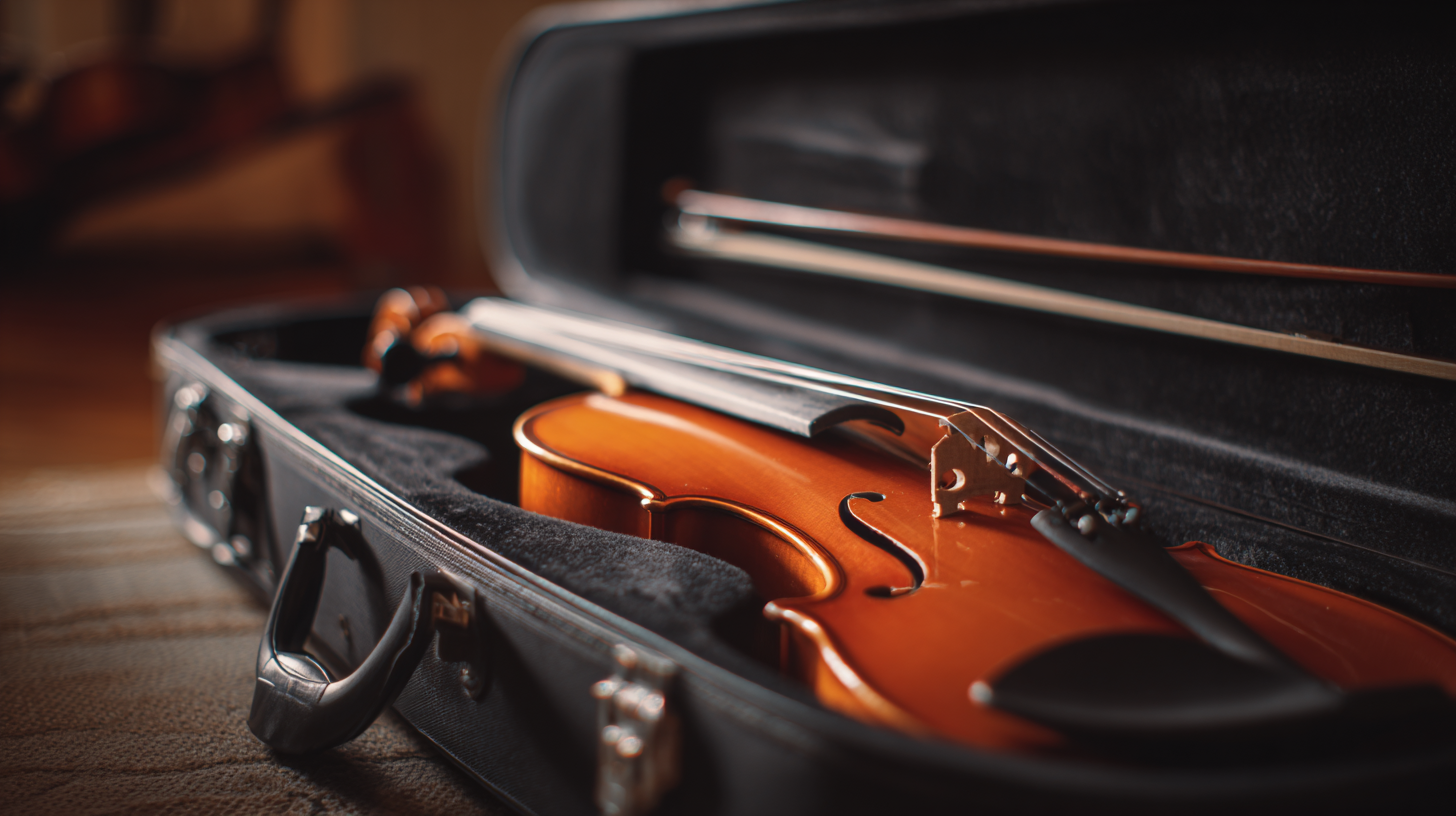- 0086-0769-87986375
- Welcome you to Dongguan Yili Bags Co., Ltd. website!
How to Choose the Perfect Musical Carrying Bag for Your Instruments: A Step-by-Step Guide
In the ever-evolving landscape of the music industry, the importance of having a reliable and stylish Musical Carrying Bag cannot be overstated. According to a recent report from the National Association of Music Merchants (NAMM), nearly 50% of musicians face challenges in transporting their instruments safely and conveniently. As musicians invest in high-quality instruments, the need for protective gear has become paramount; a well-designed Musical Carrying Bag not only safeguards instruments from physical damage but also enhances the musician's mobility. Furthermore, with a growing trend towards personalized and versatile designs, the demand for specialized carrying cases has surged, highlighting the necessity for informed decision-making when selecting the perfect bag. This guide will provide you with a step-by-step process to navigate through the myriad of options available, ensuring that your instruments are protected while reflecting your unique style.

Understanding Your Instrument's Size and Shape
When it comes to selecting the ideal musical carrying bag for your instruments, understanding the size and shape of your instrument is critical. Different instruments have distinct dimensions, which necessitate bags designed to provide optimal protection and portability. For instance, a standard acoustic guitar typically measures around 39 to 41 inches in length, while a violin averages about 24 inches. According to industry data from the Music Industry Association, improper bag selection can lead to significant damage, with 30% of musicians reporting issues attributed to inappropriate carrying solutions.
Tip 1: Always measure your instrument before purchasing a bag. Refer to your instrument's specifications to find a bag that tightly fits without excessive space, which can lead to movement and potential damage during transport.
The shape of the instrument also plays a pivotal role in your choice of carrying bag. Instruments with a curved design, like cellos and basses, require specially contoured bags to ensure a snug fit. A study by the International Music Products Association revealed that over 25% of musicians faced damage issues related to poor-fitting bags.
Tip 2: Look for customizable or adjustable carrying bags with cushioning features that accommodate various shapes and ensure your instrument is secure and protected. This is particularly crucial for professional musicians who travel frequently. Prioritize finding a bag that combines functionality with enough padding to safeguard your valuable instruments against the rigors of transport.
Identifying Essential Features for Protection and Storage
When selecting a musical carrying bag for your instruments, identifying essential features for protection and storage is crucial. A well-designed bag should provide adequate padding to safeguard your instruments from bumps and drops. Look for bags with reinforced walls and impact-resistant materials that absorb shock, ensuring your valuable gear remains unharmed during travel. Additionally, consider water-resistant fabrics to protect your instruments from moisture, especially if you frequently perform outdoors or in unpredictable weather conditions.
Storage capacity is another vital aspect to evaluate. Your ideal bag should offer ample space not only for the instrument itself but also for accessories such as sheet music, picks, and tuners. Internal compartments or pockets can help you keep everything organized and easily accessible. Adjustable straps and ergonomic designs can enhance portability, making it easier to transport your instruments to gigs, rehearsals, or lessons. Prioritizing these features will help you find a bag that not only meets your functional needs but also complements your musical journey.

Material Matters: Choosing the Right Fabric for Durability
When selecting a musical carrying bag for your instruments, the material you choose plays a crucial role in ensuring durability and protection. Fabrics such as nylon and polyester are popular choices due to their lightweight yet robust nature. These synthetic materials are not only resistant to water and abrasions but also provide a layer of cushioning that can help safeguard your instrument from bumps and drops. It's essential to consider the environment in which you'll be using the bag; for outdoor performances or travel, a weather-resistant fabric can make all the difference.
In addition to weather resistance, look for bags with reinforced stitching and high-quality zippers, as these features contribute significantly to the longevity of the bag. Canvas is another excellent option, known for its ruggedness and classic look. However, it may require a bit more maintenance to keep it clean and free of wear. Ultimately, choosing the right fabric not only protects your instrument but also enhances your overall experience as a musician, ensuring that your gear remains safe while you focus on what you love most—making music.
Material Durability Comparison for Musical Carrying Bags
Carrying Comfort: Selecting Straps and Handles
 When selecting the perfect musical carrying bag for your instruments, comfort should be a top priority, especially when it comes to the straps and handles. Well-designed straps can significantly affect the ease of transport, so look for options that are adjustable and padded. Padded straps relieve pressure on your shoulders and back, making long commutes to rehearsals or gigs more manageable. Additionally, an adjustable strap ensures that you can customize the length for a more personalized fit, catering to your height and posture.
When selecting the perfect musical carrying bag for your instruments, comfort should be a top priority, especially when it comes to the straps and handles. Well-designed straps can significantly affect the ease of transport, so look for options that are adjustable and padded. Padded straps relieve pressure on your shoulders and back, making long commutes to rehearsals or gigs more manageable. Additionally, an adjustable strap ensures that you can customize the length for a more personalized fit, catering to your height and posture.
Handles play a crucial role in how you carry your instrument. Opt for bags with robust, ergonomic handles that allow for a comfortable grip. Consider designs with padded handles for extra comfort, especially if you need to carry your instrument for extended periods. Some bags even feature side or front handles, providing versatility in how you transport your gear. Whether you prefer to carry your instrument on your back or by hand, ensuring that both the straps and handles are comfortable will enhance your overall experience and keep you ready for your next musical challenge.
Budgeting Wisely: How to Find Quality Bags Within Your Price Range
When it comes to choosing the perfect musical carrying bag for your instruments, budgeting wisely is crucial. To find quality bags within your price range, start by identifying your budget limits. Research the materials and brands reputable for durability and protection, as these factors significantly influence both the pricing and the longevity of the bag. A solid investment should combine functionality with longevity, ensuring your instrument remains safe during transport.
As you explore your options, don't hesitate to compare different styles and features across diverse price points. There are plenty of budget-friendly bags that offer excellent protection without compromising on quality. Look for user reviews and expert recommendations that highlight the best value for your money. Balancing quality with affordability will ultimately lead you to a bag that not only fits your instrument snugly but also aligns with your financial plan, making your musical journey enjoyable and stress-free.
How to Choose the Perfect Musical Carrying Bag for Your Instruments: A Step-by-Step Guide - Budgeting Wisely: How to Find Quality Bags Within Your Price Range
| Bag Type | Material | Price Range | Weight Capacity | Recommended For |
|---|---|---|---|---|
| Soft Gig Bag | Nylon | $30 - $70 | Up to 25 lbs | Guitar Players |
| Hard Case | Plastic/Aluminum | $100 - $200 | Up to 50 lbs | String Instruments |
| Backpack Style | Canvas | $40 - $90 | Up to 30 lbs | Drummers |
| Designer Bag | Leather | $150 - $300 | Varies | Professional Musicians |
| Multi-Instrument Bag | Polyester | $80 - $150 | Up to 40 lbs | Multi-Instrumentalist |
